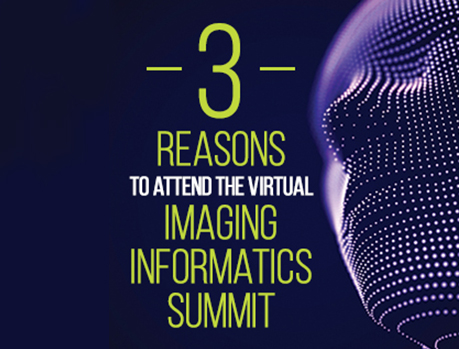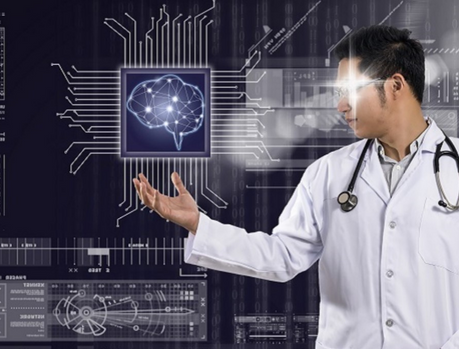3 Reasons to Attend the Virtual Imaging Informatics Summit

For the past five years, radiologists have been hearing wide-ranging predictions about how AI will impact medical imaging. The bolder forecasts suggested that AI would have replaced the human radiologist by now. But, while a few institutions have amassed data, brought in analytical talent, and looked for ways to bring AI to healthcare, it’s far from the industry standard. And human radiologists are more in demand than ever.
Too often, it’s hard to envision what AI offers. What’s the benefit to the patient? The radiologist? The health system? How much is the return on investment? Why is it so difficult to answer these questions?
Overpromising AI has resulted in widespread head-scratching over what’s real and what’s not. And when the path isn’t clear, it’s easy to sit back and do nothing. As Bill Gates said, “We always overestimate the change that will occur in the next two years and underestimate the change that will occur in the next 10. Don’t let yourself be lulled into inaction.”
Time to Take Action
On October 27-28, 2020, the ACR is hosting the Virtual 2020 Imaging Informatics Summit, a two-day event focusing on what AI actually looks like at a PACS workstation today — and what it might look like in the near future. We’ll break down the challenges radiologists face with AI tools and share the experiences of radiologists currently working with sustainable AI programs.
Those guilty of being lulled into inaction, should take the plunge and register soon. If you’re curious about the key takeaways, here’s an unofficial guide to three things you can expect to get out of the meeting.
1. What you’ve been led to believe AI looks like may not be true.
Relatively few AI models in healthcare are available for clinical use today and misunderstandings about AI are all too common. The fundamental flaw in asserting that AI will replace radiologists is based on the belief that AI models can be developed for the thousands of tasks radiologists perform. The truth is, of the 40-odd FDA-cleared AI models for radiology, none provide any level of autonomous care. The most common form these models take is triaging worklists based on the identification of potential abnormalities or critical findings.
Still, narrow algorithms can provide a great deal of value to radiology. They are being used effectively at institutions participating at the Summit, and we will share the strategy for putting them into place and improving outcomes.
2. There are no established models for AI implementation in healthcare (but that hasn’t stopped anyone).
Gregory N. Nicola, MD, FACR, our kickoff speaker on the second day of the Summit and chair of the ACR Commission on Economics, will cover the economics of AI. Economic models are likely to evolve to support AI development. Most likely, the outcome will be that radiologists using AI will provide more value than either radiologists or AI alone.
So the question becomes: “How are the radiologists currently using AI paying for it, and do they expect this to change in the future?” During the course of the Summit, we’ll hear how value is demonstrated and how it is translated into the current payment system.
3. AI will impact the way radiology is practiced.
AI optimists don’t believe AI will replace radiologists, but do believe it will make us better physicians and help us take better care of our patients. But the process will be much more gradual than the bold forecasters suggest. As Yogi Berra once said, “It’s tough to make predictions, especially about the future.”
The early adopters among us can help us to see where we should be headed. You’ll have the opportunity to learn from their mistakes and take advantage of what they’ve discovered while being on the leading edge.
Don’t Miss Out
The 2020 ACR Imaging Informatics Summit promises to serve up the insight and opportunities you need to manage the latest in AI and be prepared for what’s next. Don’t miss out. Register today.
Tessa S. Cook, MD, PhD, FSIIM | Co-Chair of the 2020 Imaging Informatics Summit and Assistant Professor of Radiology at the Hospital of the University of Pennsylvania
3 Reasons to Attend the Virtual Imaging Informatics Summit
-

You may also like
Who Is Responsible (and Liable) for AI Use in Healthcare?October 17, 2022 | Irene Dixe de Oliveira Santo, MDAs radiologists, we strive to deliver high-quality images for interpretation while maintaining patient safety, and to deliver accurate, concise reports that will inform patient care. We have improved image quality with advances in technology and attention to optimizing protocols. We have made a stronger commitment to patient safety, comfort, and satisfaction with research, communication, and education about contrast and radiation issues. But when it comes to radiology reports, little has changed over the past century.